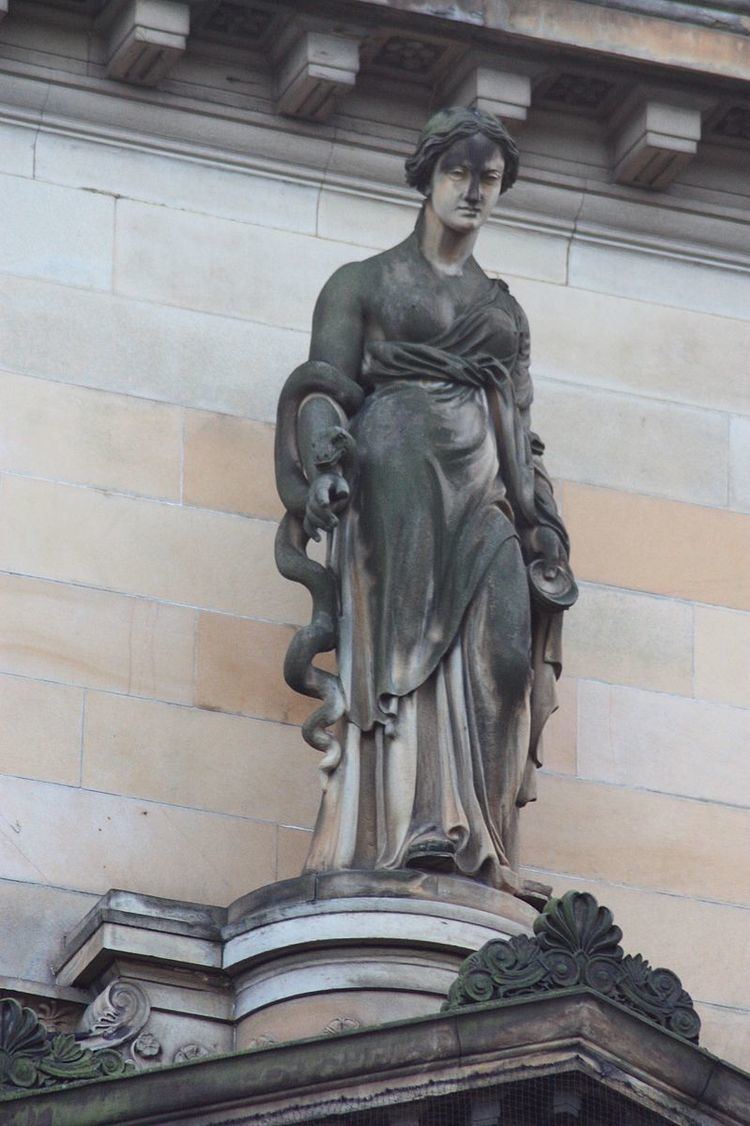 | ||
In Greek as well as Roman mythology, Hygieia (also Hygiea or Hygeia; Ancient Greek: Ὑγιεία or Ὑγεία, Latin: Hygēa or Hygīa), was the daughter of the god of medicine, Asclepius, and Epione. She was the goddess/personification of health (Greek: ὑγίεια - hugieia), cleanliness and hygiene.
Contents
Hygieia as well as her four sisters each performed a facet of Apollo's art: Hygieia ("Hygiene" the goddess/personification of health, cleanliness, and sanitation); Panacea (the goddess of Universal remedy); Iaso (the goddess of recuperation from illness); Aceso (the goddess of the healing process); and Aglïa (the goddess of beauty, splendor, glory, magnificence, and adornment).
Hygieia also played an important part in her father's cult. While her father was more directly associated with healing, she was associated with the prevention of sickness and the continuation of good health. Her name is the source of the word "hygiene". She was imported by the Romans as the goddess Valetudo, the goddess of personal health, but in time she started to be increasingly identified with the ancient Italian goddess of social welfare, Salus.
History
At Athens, Hygieia was the subject of a local cult since at least the 7th century BC. "Athena Hygieia" was one of the cult titles given to Athena, as Plutarch recounts of the building of the Parthenon (447-432 BC):
However, the cult of Hygieia as an independent goddess did not begin to spread out until the Delphic oracle recognized her, and after the devastating Plague of Athens (430-427 BC) and in Rome in 293 BC.
In the 2nd century AD, Pausanias noted the statues both of Hygieia and of Athena Hygieia near the entrance to the Acropolis of Athens.
Worship
Hygieia's primary temples were in Epidaurus, Corinth, Cos and Pergamon. Pausanias remarked that, at the Asclepieion of Titane in Sicyon (founded by Alexanor, Asclepius' grandson), statues of Hygieia were covered by women's hair and pieces of Babylonian clothes. According to inscriptions, the same sacrifices were offered at Paros.
Ariphron, a Sicyonian artist from the 4th century BC wrote a well-known hymn celebrating her. Statues of Hygieia were created by Scopas, Bryaxis and Timotheus, among others, but there is no clear description of what they looked like. She was often depicted as a young woman feeding a large snake that was wrapped around her body or drinking from a jar that she carried. These attributes were later adopted by the Gallo-Roman healing goddess, Sirona. Hygieia was accompanied by her brother, Telesphorus.
